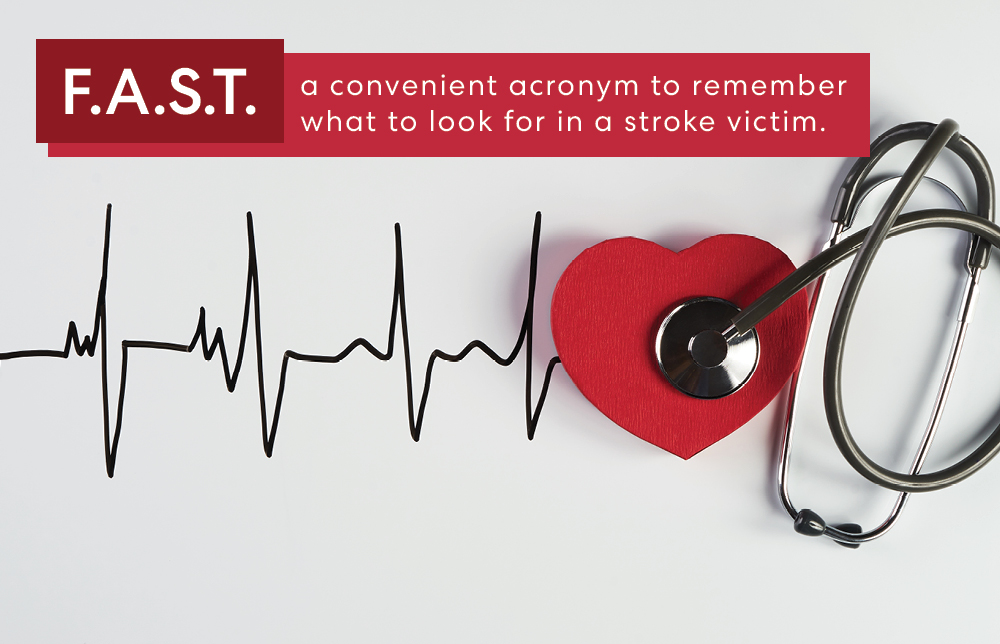
How “F.A.S.T.” Can You Recognize the Signs of a Stroke?
June 25, 2021
According to a recent study, the majority of adults don't know the most common symptoms of a stroke. This is particularly alarming because nearly 800,000 Americans suffer a stroke each year. And with a stroke, time is truly of the essence. Patients who are given of the clot-busting treatment t-PA (tissue plasminogen activator) within three hours are significantly more likely to leave the hospital after three months with little to no disability. The catch: t-PA must be administered within three hours of the beginning of the stroke. Currently, less than 5% percent of stroke patients reach the hospital within that time frame.
The earlier you’re able to recognize symptoms, the better your chances at reducing long-term disability from stroke for a loved one or yourself. You can make all the difference if you’re able to act F.A.S.T.
“F.A.S.T.” is a convenient acronym to help you remember what to look out for in a stroke victim.
- Face: Does one side of the face droop?
- Arm: Is one arm or leg weak or numb?
- Speech: Is speech slurred or strange?
- Time: If you observe any of these signs, call 911 immediately.
Additional indications of a potential stroke include a severe headache, loss of balance/dizziness/difficulty walking, and trouble seeing in one or both eyes.
The more you’re able to recognize these symptoms, the more likely you are to minimize the long-term effects of a stroke and even prevent death. Calling 911 is critical because trained EMS personnel can start the care protocol on the way to the hospital and have specialized teams standing by, ready to administer the appropriate treatment immediately.
Another important way to be prepared for a stroke is with a Cancer/Heart/Stroke policy from MRTA and AMBA. This plan pays money directly to you in one lump sum payment upon diagnosis of internal cancer or malignant melanoma, heart attack, or stroke. The money is yours, to be used however you like: to cover the costs of hospital care, travel, or other out-of-pocket expenses. Learn More.
Source: www.ahajournals.org/doi/10.1161/STROKEAHA.120.031137
RECENT POSTS

President Eisenhower, A Dental Emergency, and the (Potential) Alien Cover-Up
Early in 1954, President Dwight Eisenhower departed from the cold of the Washington, D.C. winter for a golf vacation in Palm
Read More

Get Big Savings on Great Gifts with Help from Your Friends at AMBA
Get Big Savings on Great Gifts with Help from Your Friends at AMBA Ready to make the most wonderful time of the year even
Read More
Season’s Cheatings! How to Beat Scammers and Crooks This Holiday Season
It’s the most wonderful time of the year…for scammers. The holiday season is scammers’ favorite time of
Read More

AI in Eye Care: Artificial Intelligence is Revolutionizing the Future of Your Vision’s Health
Artificial Intelligence (AI) is becoming an increasingly important tool in all walks of life. AI’s ability to analyze
Read More

